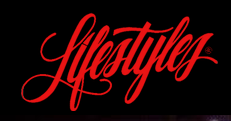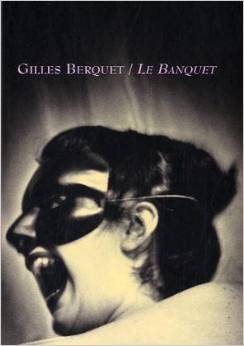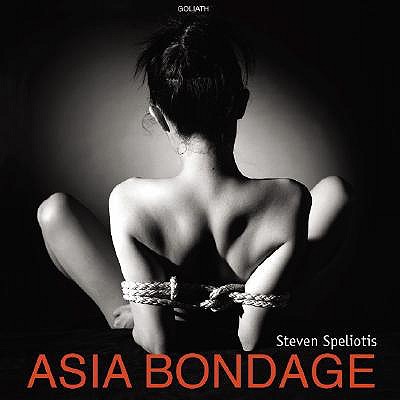 In late June of 2003 I received one of the more unusual requests of my professional life — an invitation to deliver the keynote address to the Lifestyles Convention 2003 at the Aladdin Hotel & Casino, Las Vegas, Nevada, coming up shortly on August 8, 2003.
In late June of 2003 I received one of the more unusual requests of my professional life — an invitation to deliver the keynote address to the Lifestyles Convention 2003 at the Aladdin Hotel & Casino, Las Vegas, Nevada, coming up shortly on August 8, 2003.
Only when I got there did I discover that this particular event’s demographic consisted exclusively of married heterosexual swingers who swap partners only with other married couples. Not that I’d anticipated anything happening for me in that environment, but it definitely made me a fish out of water.
Nonetheless, I enjoyed the company, the festivities, and Vegas, that most Usonian of all cities, and used the lecture occasion as best I could. This is the complete text of the talk I delivered, in two parts. (Click here for Part 1.) It seems even more relevant to the situation today than it did eleven years ago. — A. D. C.
•
Mainstreaming the Sexual Underground (continued)
What’s most striking about this photo-erotic activity, overall, is the atmosphere of normalcy that emanates from it. Increasingly, photographic imagery explicitly depicting people having sex not only gets made but also achieves wide distribution through channels both legal and reputable — via exhibitions in museums, galleries, and other spaces; by publication in books and magazines; and, of course, through presentation on the internet.
Which means that these images are seen and absorbed by an ever-widening audience that considers images of people engaged in sex to be a reasonable component of contemporary photographic practice. In short, what not too long ago existed in an underground environment has turned undeniably over-the-counter and mainstream.
Numerous aspects of this movement toward legitimized sexual image-making are worth considering. One of these is that this movement is inherently political. By its very existence, the range of sexual images being produced opposes the core right-wing dictate that sexual activity should properly be restricted to heterosexual interaction between husbands and wives, without accouterments and with procreation foremost in mind — and that sexual activity should never involve shameless public display.
These photographs, the people involved in making them, and even you, as an audience for them, propose just the contrary: that sex is a territory of free play between consenting adults, that as a form of theater and experiment it may well involve costumes and props, that whatever gives pleasure and does no harm is permissible, that sexual expression and procreation are separable activities, that one is free to choose one’s sexual partners from any gender or gender preference — and that participating in the project of photographing sexual behavior, on either side of the lens, stems logically from those assumptions, as does viewing the results.
Now that’s a political stance, if only because many in this country, if they had their druthers, would prevent us from seeing these pictures. They would, in fact, punish all those involved — punish you and me for buying or owning any of it and possibly even for looking at it, punish the publishers and curators and gallery owners for presenting it, punish the photographers for making the images, punish their subjects for posing, punish some of the subjects for even engaging in the specific acts they’re performing. So there’s no separating the movement toward freedom of vision from the political context of the U.S. at the beginning of the 21st century.
There’s also an important cultural component to this imagery that’s worth considering, a sociological aspect. Surely it tells us something about our times and our mores that so many people from so many backgrounds participate willingly, even eagerly, in the production and consumption of sexually explicit imagery — as subjects, as photographers, and as viewers. This recent bounty of photo-erotic work represents a generational shift in the socially acceptable level of frankness and disclosure about individual sexuality and the appropriate representation thereof. It offers tangible evidence that the current administration in Washington in no way represents a clear majority of this country’s electorate, who would, given a fair chance, reject at the polls the cultural neoconservatism of opportunistic politicians. It shows us that attitudes in the States have changed radically in regard to matters sexual, and changed, most probably, for the long term.
This doesn’t mean that sexuality has turned into a cause for all who practice the manifold present-day alternatives. We have few public demonstrations or petition campaigns on behalf of sexual freedom as a general principle, no protest marches by fellators and cunnilinguists. In part this is because we don’t need them — at least not yet. The thought police may harass individuals, but they’re not yet rounding up everyone into oral pleasure or leather or rubber or B&D or water sports or same-sex coupling … or swinging. Indeed, it’s hard to imagine that day, no matter how much the new Comstockians bluster. Too many of us, throughout the country, have too much to lose that we consider crucial to our lives to allow that to happen. After all, even the most conservative Supreme Court in my lifetime recently came out in reluctant support of the right to consensual sodomy.
So one curious sociological aspect of the current climate of sexual liberation is that it manifests itself not in a marked increase in outrageous public behavior — no sudden outbreaks of people making love on trains and planes, or in the parks, or the supermarkets — but rather in such realms as fashion (where leather, chains, piercings, and tattoos have become trendy ways to accessorize), art and entertainment (where these themes are increasingly foregrounded), and in our private spheres — in the ways we live our personal erotic lives, in what we do with (and to) our lovers.
Much contemporary material in the arts constitutes a complex communication system through which those actively concerned with sexual matters and engaged in diverse sexual behaviors signal to each other and participate in a culture-wide discourse about human sexuality and our repertoire of sexual practices. Pictures don’t talk, they show — and photographs, in the minds of many, prove. Photographs have their own rhetorical strategies, and their own capacity for eloquence. They evoke our responses on a sensory, right-brain level. All of which depends on the craft skills and level of insight of the photographer and on the cooperation and active collaboration of the subjects.
Among the unifying threads in contemporary photo-erotic work, I find a consistent ease with the camera as a component of the sexual act, and thus, implicitly, with the photographer’s presence in the sexual situation. So we need to consider these as team efforts in the visual documentation and expression of sexuality at the turn of the new century, and to recognize that establishing the trust implicit in the subjects’ permission to make such photographs is as significant an artistic accomplishment as the consequent production of stirring images.
Notably, the photographers now producing sexual photography demonstrate as acute a concern with the crafting of remarkable images as do their counterparts in other areas of documentary and fine-art photography. It’s possible (even commonplace) to make bad images of good sex, boring images of sexual heat. The depth of reponse that the best of these pictures evoke stems as much from the photographers’ interpretive skills — their talent for structuring depictions that convey the intensity and complexity of erotic intimacy — as it does much from the photos’ charged subject matter.
In part, that’s because these photographers regularly come closer to the sexual act — literally — than any preceding generation has done. Their physical distance from their subjects varies, of course, from one picture to the next, but collectively they don’t hesitate to move themselves — and, through their eyes, the viewer — into what sociologist Edward T. Hall defined as intimate distance: the range between arm’s-length and skin-to-skin. This shifts how we read the images, casting us as vicarious participants rather than as voyeurs, thus implicating us psychologically even more deeply in the situations portrayed.
No less importantly, what is striking about current work is its diversity of style and mood, its attention to the sensuous and tactile, and its insistence on encompassing not only a wide range of sexual behaviors but also a full spectrum of sexual moods. This generation of photographers has its eyes out for a wide range of revelations about sex, not just our moments of unbridled lust. Along with the edgy and rough, they offer us glimpses of the playful, the tender, the intimate, the affectionate, the delicate, the humorful, even the goofy — sex in all its delicious, constantly shifting intricacy. This collective accomplishment unquestionably denotes a raising of the bar for what Steinberg calls “sexual photography” — an embrace of the true complexity of sex at the present-day intersection of sex and photography.
 R. C. Hörsch, Nick Karras, Donna Ferrato, Lisa Prichard, and the other photographers whose work you’ll find on exhibit here are breaking new ground in the forthright visual discourse on sex. They represent a much larger network of photographers in the U.S. and abroad exploring human sexuality in our time, just as their particular human subjects stand for many others among us who have participated in our own acts of photo sex — including those who, from time to time, in the great American do-it-yourself tradition, take their still or video cameras to bed, set up a webcam on a screened-off back porch, or otherwise make a lensed instrument into an aphrodisiac and a sex toy.
R. C. Hörsch, Nick Karras, Donna Ferrato, Lisa Prichard, and the other photographers whose work you’ll find on exhibit here are breaking new ground in the forthright visual discourse on sex. They represent a much larger network of photographers in the U.S. and abroad exploring human sexuality in our time, just as their particular human subjects stand for many others among us who have participated in our own acts of photo sex — including those who, from time to time, in the great American do-it-yourself tradition, take their still or video cameras to bed, set up a webcam on a screened-off back porch, or otherwise make a lensed instrument into an aphrodisiac and a sex toy.
This cat’s out of the bag, in other words, and it seems unlikely that anyone will manage to persuade it — or even push it — back in.
Thank you.
•
[Postscript: After my talk, several attendees came up to say, “This might surprise you, but a lot of the people here are Republicans.”]
(Part 1 I 2)











Thanks A.D. I really enjoyed these two posts.
Best,
Judy
Allan,
Just want to say, once again, that this was a great speech on fine art sexual photography. Hope all is well.
David